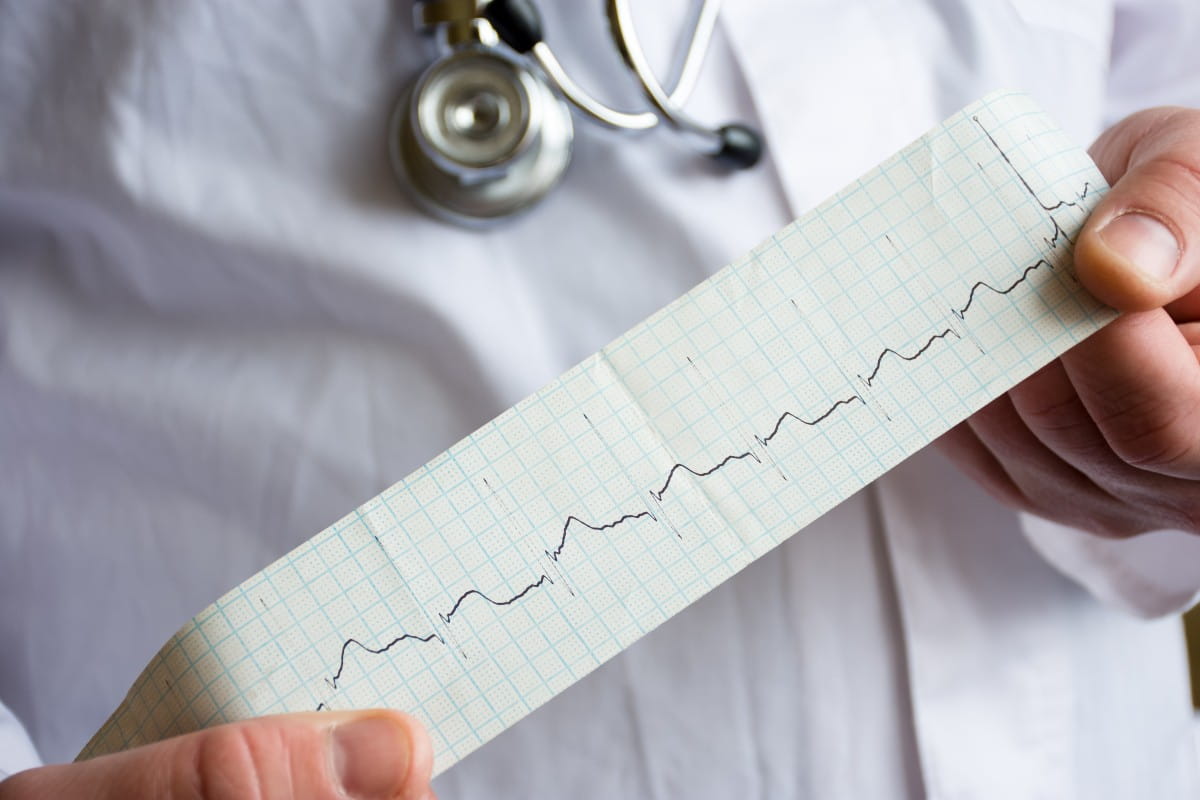Heart problems are often described in construction terms. “Plumbing” problems, such as clogged arteries, can slow or block blood flow to the heart causing death to the heart muscle. “Electrical” problems occur when the electrical pattern of the heart is disrupted causing the heart to beat out of rhythm, changing the blood flow to the whole body.
If you’ve experienced a heart flutter or have the feeling that your heart is going too fast or too slow, you may wonder if you have an irregular heart rhythm. And you aren’t alone. Millions of Americans experience an irregular heart rhythm, known as an arrhythmia, at some point in their life.
The heart’s electrical system
“There is a source of electricity in the upper chamber that generates an impulse when your heart beats,” says Maen Abou Ziki, M.D., a cardiologist and cardiac electrophysiologist with Riverside Cardiology Specialists. “That impulse spreads to every corner of the heart so the whole heart pumps in a coordinated or synchronized way.”
But when problems occur in that electrical system, the different parts of the heart can contract out of order or at different times, which changes the rhythm and disrupts the normal blood flow to the rest of the body.
Dr. Abou Ziki explains that some arrhythmias aren’t life threatening but cause annoying symptoms that can impact your quality of life. But other irregular heart rhythms can be very dangerous and life threatening. So, it is important to talk to your primary care provider if you have any concerns about your heart rhythm.
Types of arrhythmias
Conduction problems occur when electrical flow is interrupted between the upper and lower chambers of the heart. Because of this, the heart cannot beat normally. Patients with conduction problems often experience slower heart rhythms and may feel dizzy or faint.
Other problems occur when one area, or chamber, of the heart is active when it shouldn’t be and thus generating too much electricity. This can cause the wrong part of the heart to take over the rhythm.
An arrhythmia may feel very different depending on what’s going on inside the heart. The American Heart Association recommends getting to know common types of arrhythmias to better understand and identify their symptoms:
- Atrial fibrillation = upper heart chambers contract irregularly
- Bradycardia = slow heart rate
- Tachycardia = fast heart rate
- Conduction disorders = heart does not beat normally
- Premature contraction = early heartbeat
- Ventricular fibrillation = disorganized contraction of the lower chambers of the heart
Recognizing arrhythmia symptoms
Common symptoms of arrhythmia include:
- Fluttering sensation
- A heartbeat that feels fast or slow
- Skipping beats
- Lightheadedness
- Dizziness
- Chest pain
- Shortness of breath
- Sweating
- Fatigue
- Anxiety
“Many symptoms of arrhythmia overlap with those of other heart problems. If you are experiencing heart attack symptoms like chest pain, shortness of breath, or pain radiating up the arm or jaw, call 911 immediately,” says Dr. Abou Ziki. “Talking with your primary care provider about any changes you have noticed or new symptoms that have started can help identify problems sooner rather than later. And if they suspect an irregular heart rhythm, they will refer you to a specialist.”
Diagnosing arrhythmias
The treatments for arrhythmias will depend in the type of irregular heart beat as well as any underlying causes. Electrophysiology tests, or tests to understand and capture recordings of your heart rhythms over time, are used to help the physician determine the exact type of irregular heartbeat someone has. There are different types of tests, but they all involve wearing a heart monitor for a period of time.
Today many people wear “smart watches” that can help identify a problem. While these aren’t calibrated to the level of testing equipment used in hospitals, they can help bring attention to a problem. If you wear such a device and it indicates a problem, be sure to talk to your primary care provider who can either order additional tests or refer you to a specialist.
Treating arrhythmias
Treatments will depend on the type of arrhythmia, any underlying causes of the problem as well as the patient’s other medical conditions. Some irregular rhythms are more dangerous than others, so the level of treatment will vary depending on the individual’s risk. Types of treatments could include:
- Medications: Some medications are used to manage the heart rhythms. Some of these are taken at home, while some initial medications may need to be given in the hospital.
- Electrical Cardioversion: This is a treatment to restore a normal rhythm to someone whose heart is beating too quickly or irregularly. This is a short outpatient procedure where electrodes on the chest are used to shock the heart so it will return to normal rhythm.
- Catheter Ablation: This is a procedure where a tiny catheter is inserted into a blood vessel and then guided up to the heart using an x-ray screen. The physician identifies the exact location in the heart that is producing too much electricity and disrupting the normal process. Once identified, this location is intentionally scarred using either heat (from radiofrequency energy) or cold at the end of the catheter. This scarring keeps that portion of the heart tissue from over-producing the electrical charge.
- Cardiac Implantable Electronic Devices: Some patients need devices implanted in their chests to either help maintain the rhythm or to restart the heart if the rhythm becomes life threatening.
- Pacemakers: These tiny devices implanted in the chest manage irregular heartbeats. They are most often used to help patients who have slow heart beats.
- Implantable Cardioverter Defibrillator (ICDs): These are small devices, though larger than pacemakers, that are implanted in the chest. They monitor and track heart rates and can deliver shocks if the heart is too rapid or out of rhythm. Some versions also work as pacemakers and can help speed up slow rhythms.
- Left Atrial Appendage Occlusions: Atrial fibrillation (AFib) increases the risk of stroke. This is because the way the heart contracts ion that rhythm can lead blood clots forming in the area of the heart known as the left atrial appendage. If these clots form and then become loose, they can immediately block the blood flow to the brain, causing a stroke. This is why many people with AFib are on blood thinners. For patients unable to stay on blood thinning medications, having a small device, known as the Watchman device, implanted to block that tiny portion of the heart can work to prevent strokes.
If you want to discuss your risk factors for heart and vascular problems, talk to your primary care provider. To see a Riverside primary care provider, make an appointment through Riverside MyChart or call 757-534-5352 to make an appointment.



